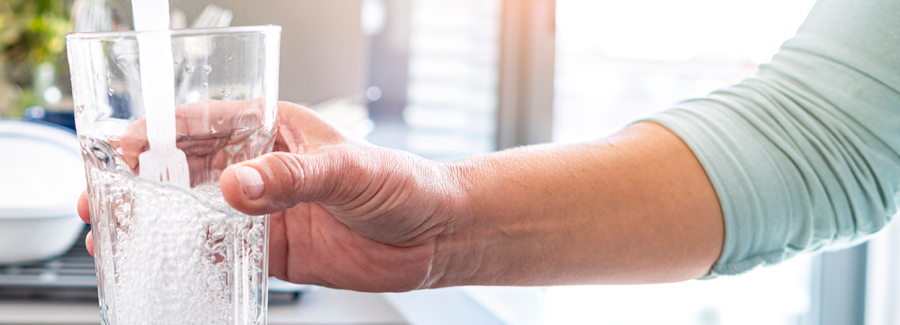Dangers of Medications in Drinking Water
What if you accidentally drank multiple medications with your water? Medicines such as blood pressure medication, diabetes medication, epilepsy medication, and antibiotics. In numerous cities and towns across the U.S. and in other parts of the world, these substances have been found in significant quantities in drinking water samples.
Water Supplies Are Contaminated
Water supplies can be contaminated with pharmaceuticals when excreted or thrown away. Additionally, runoff and waste from pharmaceutical plants and massive animal feedlots can pollute rivers and water sources. Although most people would think wastewater treatment plants would keep medications and other sneaky chemicals out of the water supply, these substances, including pharmaceuticals, can easily pass through water treatment systems undetected.
Research published in Science Daily examined pharmaceuticals in the world’s rivers and found potentially toxic levels almost everywhere studied!
The study examined 258 rivers worldwide, including the Thames in London and the Amazon in Brazil. Science Daily measured 61 different pharmaceuticals, including:
- Anti-epileptic drug carbamazepine
- Diabetes treatment drug metformin
- Beta-blocker propranolol (for high blood pressure)
- (Antibiotic) Sulfamethoxazole
- (An antibiotic) Ciprofloxacin
- Antihistamine Loratadine (used to treat allergies)
- Caffeine
- Birth control pills (sex hormones)
This is the first global investigation of medicinal contamination in the environment, conducted by the Global Monitoring of Pharmaceuticals Project at the University of York.
This latest study revealed some shocking findings, summarized by Science Daily:
- Water on every continent is contaminated by pharmaceutical pollution.
- Higher levels of pollution are significantly correlated with the population’s socioeconomic status. The lower the level of income, the more medication pollution there is.
- As pollution levels increased, so did median ages, higher rates of unemployment, and higher poverty.
- The least studied areas of the world are the most polluted, including sub-Saharan Africa, South America, and southern Asia.
Rivers Are Contaminated
There are rivers all over the world that provide water to cities. Unfortunately, the rivers are also often used as dumping grounds for pharmaceutical waste, with trash and medical waste dumped alongside riverbanks, inadequate wastewater disposal, and pharmaceutical companies dumping their waste straight into the water supply.
During a 2004 to 2009 U.S.Geological Survey (USGS) study, scientists discovered that pharmaceutical manufacturing could pose a significant risk to the environment, especially to water supplies.
Running Off From Farms
Water systems contain pharmaceuticals from more than just pharmaceutical companies. In the livestock industry, antibiotics and other drugs are significantly used. Animal feed operations (CAFOs) discharge runoff into groundwater, streams, and nearby rivers.
Along with antibiotics, other pharmaceuticals have also been detected in the water, including acetaminophen, caffeine, nicotine byproducts, antihistamines, and tranquilizers.
Is Your Neighbor Taking Your Medication?
Chemicals other than pharmaceuticals are also present in large amounts in the water populations. Wastewater systems will collect drugs that the body hasn’t fully metabolized. The problem is that these drugs can be detected miles downstream from wastewater treatment plants simply because these plants cannot remove the pharmaceuticals from the water.
Many cities pump their drinking water directly from local rivers, then purify the water. It varies significantly across the U.S. how well pharmaceuticals are removed from drinking water, but in many cities, a wide variety of medications is present in the water.
Approximately half of all the drinking water in Southern California is supplied by the Colorado River. Southern California’s water comes from the Colorado River, downstream from Las Vegas, where several pharmaceuticals find their way into the water supply. The waters of southern California are also downstream from several large cattle feedlots, and grazing lands in the Southwest U.S. These pharmaceuticals are impossible to filter out of the water.
As per the same international study, Dallas, Texas, has a cumulative API concentration in the water system of 10,000 nanograms/liter (parts per trillion). The APIs in Las Vegas are just behind Dallas at *5,000 nanograms/liter.
In Philadelphia, another study discovered 56 pharmaceuticals in the drinking water. Amoxicillin, doxycycline, acetaminophen, prednisone, carbamazepine, and phenytoin, along with 48 others detected in trace amounts, were detected in the samples. A second investigation by the Associated Press in 2008 found medications in the drinking water of over 40 million Americans.
Do You Know How Widespread This Problem is?
The United States and other countries have identified fourteen different pharmaceutical components. This seems to be a widespread problem. You can’t get away from it.
Acetaminophen, beta-blockers (which slow the heart rate and control blood pressure), epilepsy medication, antihistamines, antidepressants, antianxiety medications, and several antibiotics were used. A small village in Venezuela and Iceland were the only two areas free of drugs among the 258 samples.
Nevertheless, sewage plants are not designed for removing or treating pharmaceuticals, nor are they required. To date, no standards for the presence of drugs in water have been set by the EPA or other agencies, mainly because no one is sure what level is safe. Do you want to be taking any additional medications? It’s not healthy. These medications can cause side effects or even addiction, even in small doses. Over time, these results can accumulate.
Is it the Same for Fish and Other Organisms?
It has also been investigated whether the levels of drugs in rivers could adversely affect the organisms living there-or on humans who eat river fish since fish can absorb pollutants from the water.
Fish from the Niagara River were found to have high antidepressants in their brains. In addition, a Cornell University study found pharmaceuticals in the Hudson River and antibiotic-resistant bacteria, which originated most likely from sewage systems that got contaminated with antibiotics.
Antiepileptic drugs and antidepressants are the most prevalent medications found in most fish species. Several studies have reported that compounds in the water have caused biological alterations in fish, including reproductive, physiological, and behavioral changes.
Conclusion
Besides big pharma residue, you might also be drinking a host of scary chemicals in your water. As of right now, no one knows whether these chemicals, along with medication residues, contribute to long-term health issues. So would you be comfortable drinking water contaminated with pharmaceuticals and chemicals?
If you like to drink tap water, I recommend investing in a high-quality reverse osmosis system or a Berkey water filtration system, especially if you live on a city water system that draws water from nearby rivers and streams. In addition, those who live near pharmaceutical manufacturing facilities should be very wary. Some of what you drink and how it affects your health may never be known.
Sources:
https://childrenshealthdefense.org/defender/chd-tv-rfk-podcast-gary-wockner-drinking-water-polluted-big-pharma/?fbclid=IwAR1aVfPGX1FGve5asjKSraaHWzmepJkN2ipMd4VHr0BD0qjKxRYvNRM6e6c
California Institute of Technology. “A microbial compound in the gut leads to anxious behaviors in mice.” ScienceDaily. ScienceDaily, 14 February 2022. <www.sciencedaily.com/releases/2022/02/220214121254.htm>
Brittany D. Needham, Masanori Funabashi, Mark D. Adame, Zhuo Wang, Joseph C. Boktor, Jillian Haney, Wei-Li Wu, Claire Rabut, Mark S. Ladinsky, Son-Jong Hwang, Yumei Guo, Qiyun Zhu, Jessica A. Griffiths, Rob Knight, Pamela J. Bjorkman, Mikhail G. Shapiro, Daniel H. Geschwind, Daniel P. Holschneider, Michael A. Fischbach, Sarkis K. Mazmanian. A gut-derived metabolite alters brain activity and anxiety behavior in mice. Nature, 2022; DOI: 10.1038/s41586-022-04396-8
California Institute of Technology. “A microbial compound in the gut leads to anxious behaviors in mice.” ScienceDaily. ScienceDaily, 14 February 2022. <www.sciencedaily.com/releases/2022/02/220214121254.htm>.
https://www.usgs.gov/special-topics/water-science-school/science/pharmaceuticals-water
https://www.earth.columbia.edu/articles/view/3108
More from Beyond Organic Doctors:
Browse additional articles here, at BeyondOrganicDoctors.com







Leave a Reply
Your email is safe with us.